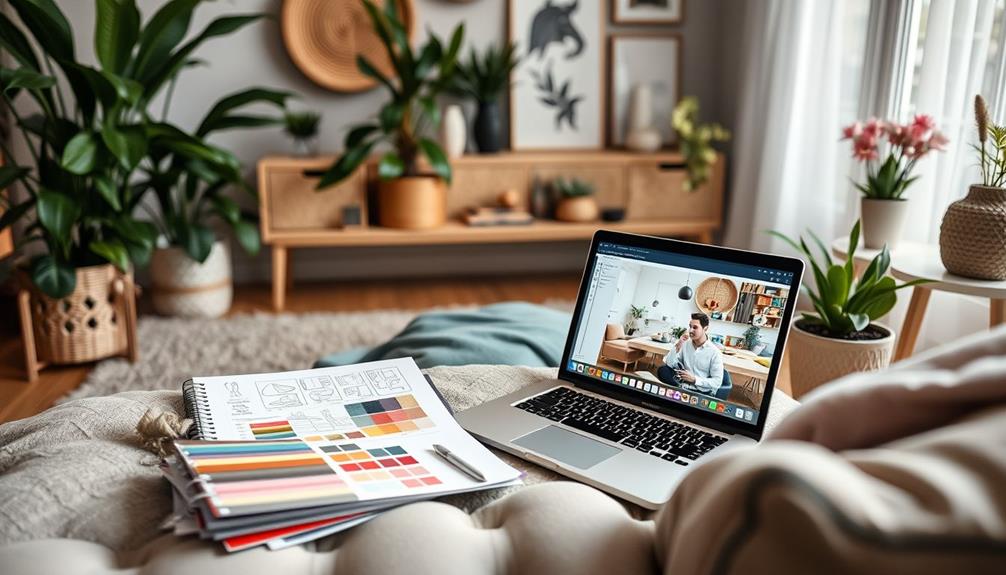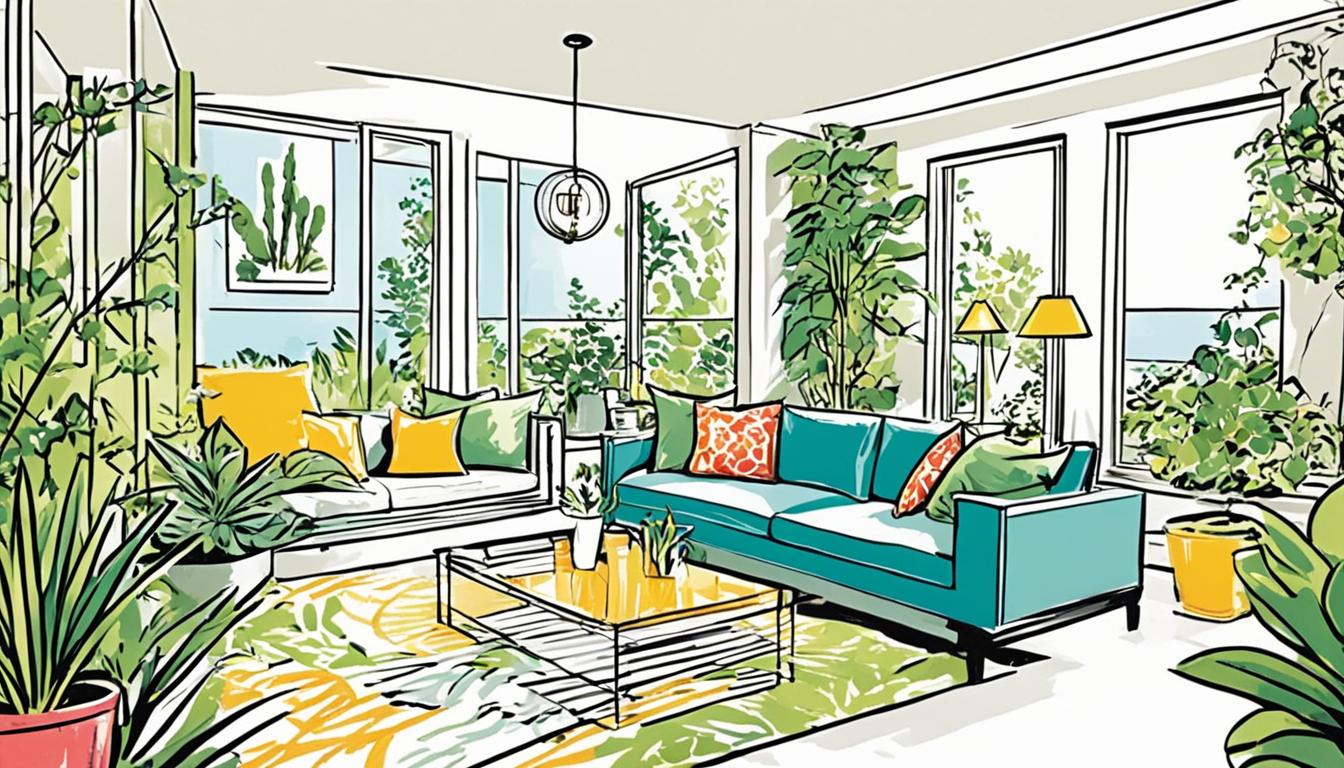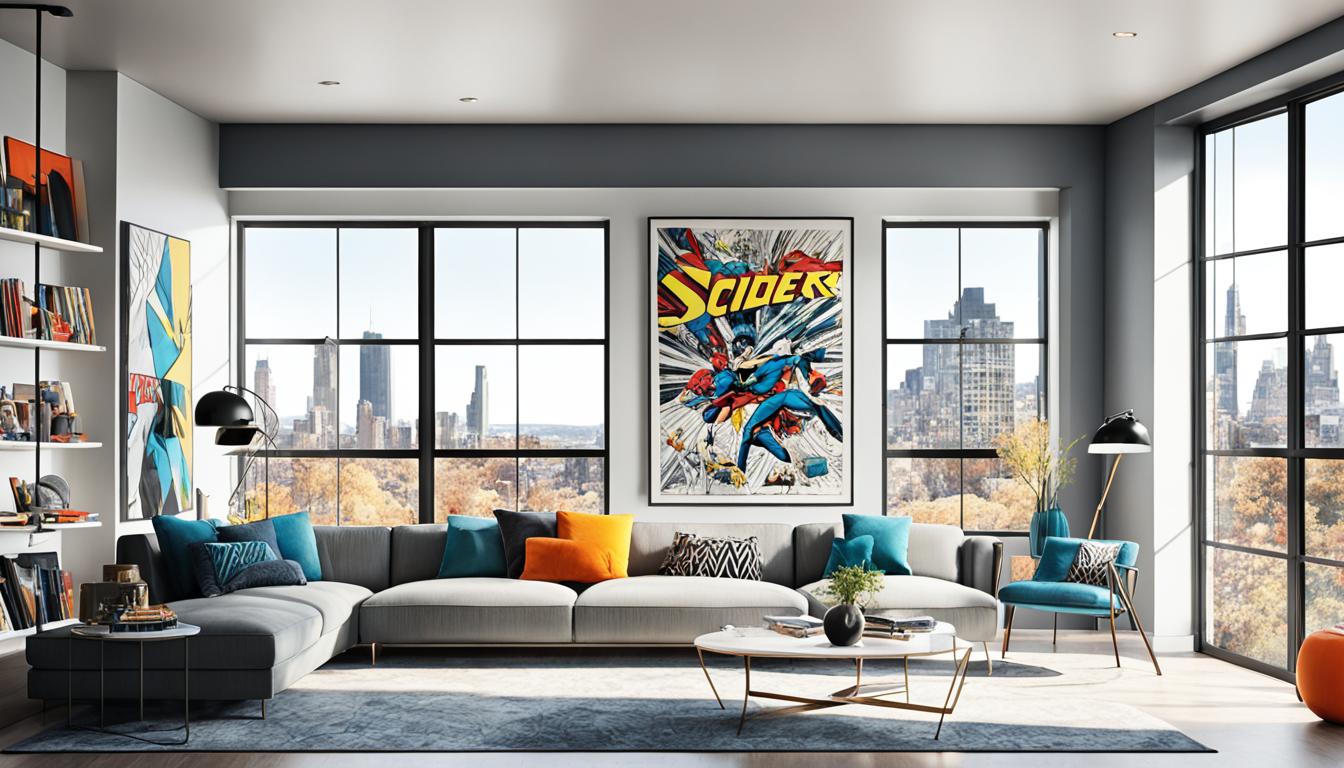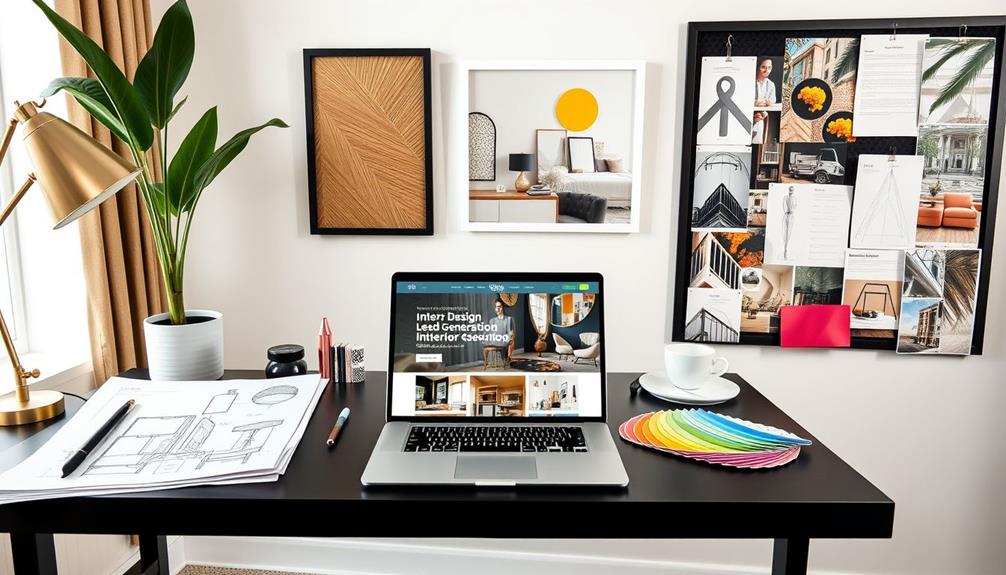You can easily get free interior design advice from various sources. Retailers like West Elm and Clare offer virtual consultations, while Minted Art Styling provides personalized art advice. You can also join online workshops and community forums to ask questions and gain insights. Social media platforms, such as Instagram and Pinterest, are great for inspiration and tips. Don't forget to explore design blogs for expert advice and trendy ideas. By engaging with these resources, you'll find the perfect support for your design projects and discover even more options to enhance your space.
Key Takeaways
- Take advantage of free virtual design consultations offered by retailers like West Elm and Clare for personalized advice from home.
- Participate in online workshops and webinars that provide expert insights and interactive Q&A sessions on various design topics.
- Utilize community forums and social media platforms for inspiration, feedback, and shared experiences with other design enthusiasts.
- Access free design resources and tools, such as user-friendly apps and blogs, for planning and visualizing your interior spaces.
- Engage in in-store design sessions for one-on-one guidance from experts, often provided for free by retailers.
Virtual Design Consultations
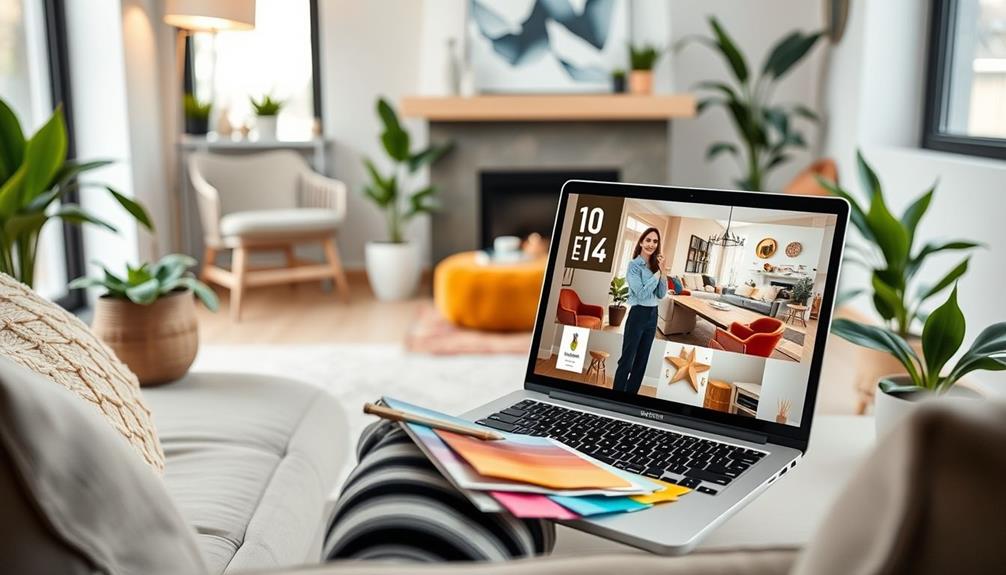
Have you ever wished you could get professional interior design advice without leaving your home? You're in luck! Many retailers now offer free design consultations that connect you with expert designers virtually.
For instance, West Elm and Clare provide these consultations, allowing you to discuss your space and get tailored advice without stepping foot outside. This innovative approach to design mirrors the commitment to enhancing functional and aesthetic aspects of spaces that many architectural services uphold.
If you're looking for specific guidance on rugs, Revival Rugs Design Support can help. They offer personalized recommendations based on your room dimensions and style preferences, complete with mock-ups to visualize your space.
Everhem takes it a step further with 30-minute consultations focused solely on custom drapery. You can explore styles, measurement techniques, and fabric options to elevate your window treatments.
One Kings Lane also offers a free 30-minute introductory consultation, diving into specific rooms and styles while providing a curated shopping list afterward.
And if art's your concern, Minted Art Styling's free art styling consultations offer personalized suggestions for wall arrangements, ensuring your decor looks cohesive.
With these services, you can access expert advice and enhance your home's aesthetic—all from the comfort of your living room.
Art and Decoration Support
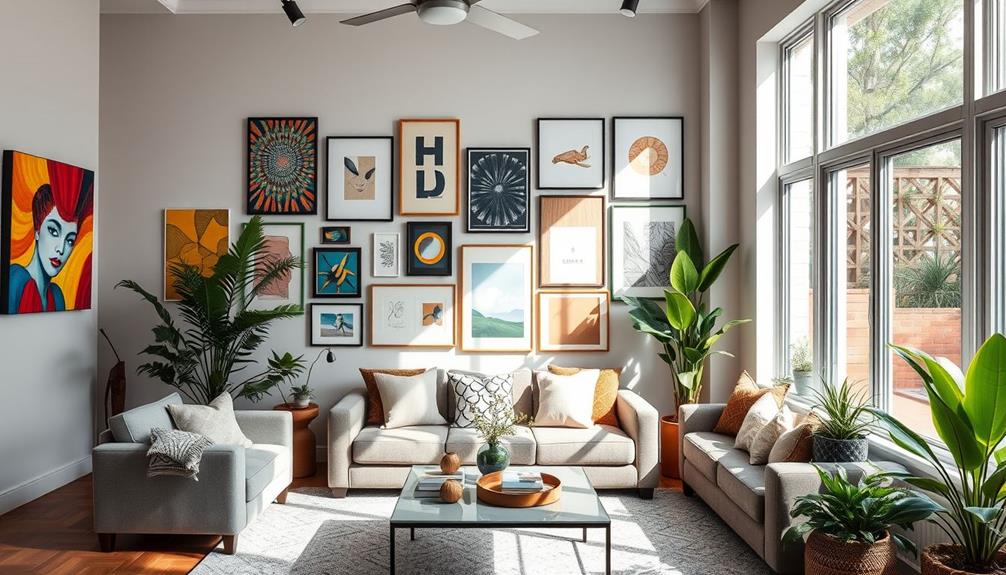
Exploring art and decoration support can elevate your space even further after gaining insights from virtual design consultations. One fantastic option is Minted Art Styling, which offers free design services through their art styling consultations. You'll receive personalized wall arrangement suggestions and layout renderings to enhance your home.
Plus, you can enjoy free revisions to guarantee your final art arrangement meets your satisfaction. For those looking to add a touch of personality to their decor, consider exploring DIY Kitchen Wall Decor ideas, which can easily incorporate unique art pieces.
Another invaluable resource is Apartment Therapy, where you can find thousands of categorized photos for inspiration. If you're facing specific art and decoration dilemmas, you can even write in for personalized advice.
Don't overlook free design workshops hosted by various retailers and online platforms. These sessions often feature industry professionals sharing tips and tricks that can help you curate your space.
Additionally, engaging with community forums and social media groups focused on home decor can provide you with valuable feedback and creative ideas on art placement and decoration strategies.
Online Design Resources

When it comes to enhancing your space, online design resources can be a game-changer. You can access a variety of free tools and services that make interior design more accessible and enjoyable. Many retailers and platforms offer free online consultations, connecting you with professional designers for personalized advice from the comfort of your home.
Additionally, virtual design resources provide instant feedback through live chat or video calls, allowing you to get immediate answers to your questions. User-friendly design apps make room planning and visualization a breeze, often featuring extensive libraries of templates and styles at no cost.
Community forums and social media platforms are treasure troves of shared knowledge, where you can seek advice and tips from both professionals and fellow enthusiasts. Plus, free workshops and webinars hosted by industry experts cover various design topics, offering valuable insights and interactive Q&A sessions.
Here's a quick overview of free online design resources:
| Resource Type | Description |
|---|---|
| Online Consultations | Connect with designers for personalized advice |
| Instant Feedback Tools | Get immediate responses via live chat |
| Design Apps | Room planning and visualization tools |
| Community Forums | Share experiences and receive tips |
| Free Workshops/Webinars | Learn from industry professionals |
Social Media Inspiration
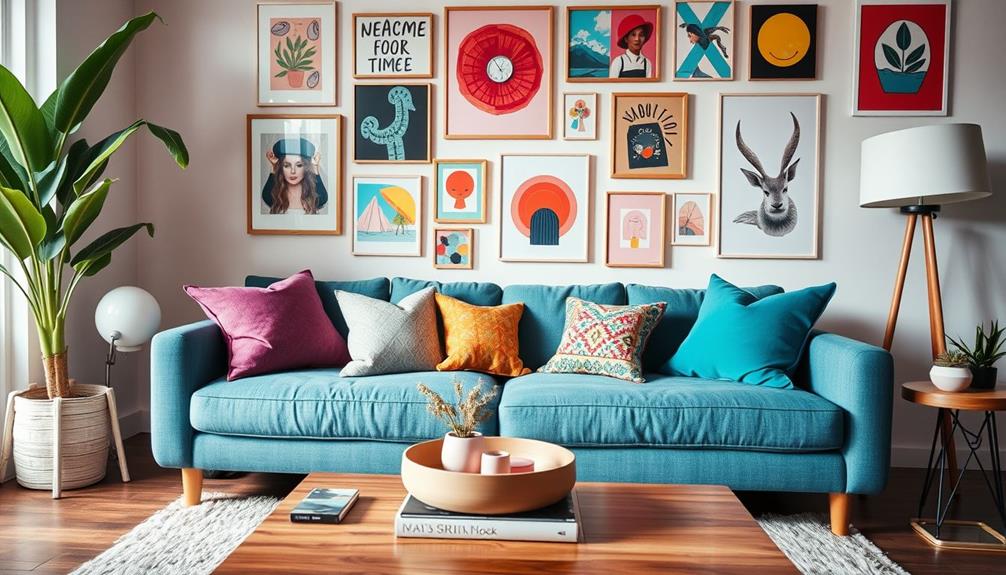
Diving into the world of social media can reveal a wealth of interior design inspiration right at your fingertips. Platforms like Instagram and Pinterest are treasure troves of curated images and design ideas from both professionals and enthusiasts. You can scroll through countless posts, gathering visuals that resonate with your personal style.
Additionally, you might come across unique gift ideas that can elevate your space, reflecting your personality and taste.
Many designers actively share expert advice on their profiles, offering tips and tricks that can help you navigate your design dilemmas. Live Q&A sessions make it easy to ask questions and get real-time feedback, turning your design challenges into learning opportunities.
By using hashtags like #InteriorDesign and #HomeDecor, you can explore specific styles and trends that match your taste, making your search for inspiration even more efficient.
Plus, don't overlook the free downloadable guides and resources designers often share. These practical tools empower you to implement fresh ideas in your own space.
Engaging with these social media communities not only fuels your creativity but also connects you with others who share your passion for design, fostering collaboration and feedback along the way.
Community Engagement Platforms

Often, community engagement platforms serve as invaluable resources for anyone looking to enhance their interior design knowledge. Online forums, like Apartment Therapy's Facebook Group, provide a space where you can share experiences, ask questions, and receive personalized advice from fellow design enthusiasts.
Social media platforms, such as Instagram and Pinterest, are also prime spots for inspiration. Here, you can engage with designers who share tips through live Q&A sessions and interactive content.
Many design professionals actively participate in these community engagement platforms, using hashtags to connect and offer free resources, guides, and downloadable content for your home decor projects. The collaborative nature of these platforms allows you to share your design projects and seek feedback, contributing to a wealth of collective knowledge and inspiration.
Engaging with others who share your passion can open doors to new ideas and techniques, making it easier to navigate your design journey. By actively participating in these platforms, you not only learn but also become part of a vibrant community that nurtures creativity and innovation in interior design.
Workshops and Educational Events
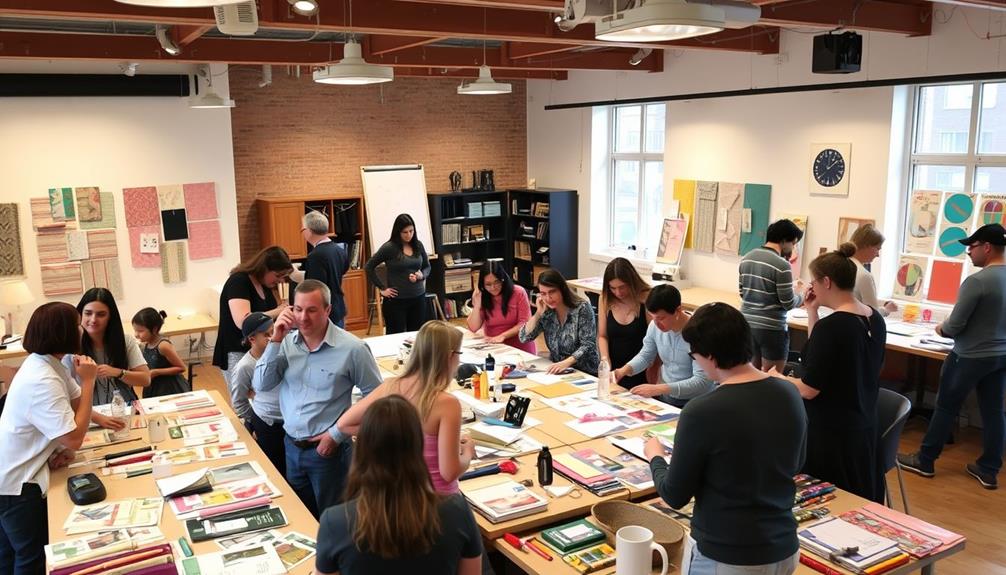
If you're enthusiastic to enhance your design skills, consider participating in virtual workshops or in-person design seminars.
These events often feature industry experts who share valuable insights on topics like color theory and space optimization.
Plus, you'll have the chance to ask questions and receive tailored advice to help you transform your space.
Virtual Workshop Offerings
Numerous organizations offer free virtual workshops and webinars that cover a variety of design topics, such as color theory, space optimization, and styling tips.
These sessions are often led by industry professionals and experienced designers, giving you valuable insights and knowledge you can apply to your own spaces.
During these virtual design workshops, you'll find interactive Q&A segments where you can ask specific questions and receive personalized advice tailored to your unique needs.
This engagement not only enhances your understanding but also allows you to tackle your design challenges in real-time.
One of the best parts? Recordings of these workshops are typically available for later viewing, so you can revisit the content at your convenience.
This flexibility means you can absorb the information at your own pace, ensuring you fully grasp the concepts discussed.
Registration for these events is usually free, making them accessible to anyone enthusiastic to enhance their interior design skills.
Don't miss this opportunity to learn from experts and elevate your design game through engaging virtual workshops!
In-Person Design Seminars
Building on the knowledge gained from virtual workshops, in-person design seminars offer an engaging opportunity to deepen your understanding of interior design. Many home improvement retailers host these free events, covering topics like color theory and space optimization. You'll gain valuable insights directly from industry professionals who are enthusiastic to share their expertise.
One of the biggest benefits of attending in-person design seminars is the interactive Q&A segment. You can ask specific questions and receive personalized advice tailored to your design dilemmas.
These seminars often include hands-on activities, such as creating mood boards or experimenting with different color palettes and materials, enhancing your learning experience.
Moreover, attendees often enjoy exclusive access to promotional offers or discounts on products discussed during the seminar, providing even more value to your participation.
Keep in mind that registration for these workshops is usually free, but spaces may be limited. Early sign-up is recommended to secure your spot and fully take advantage of the educational resources offered.
Don't miss out on this chance to elevate your design skills and transform your space!
Design Blogs and Articles
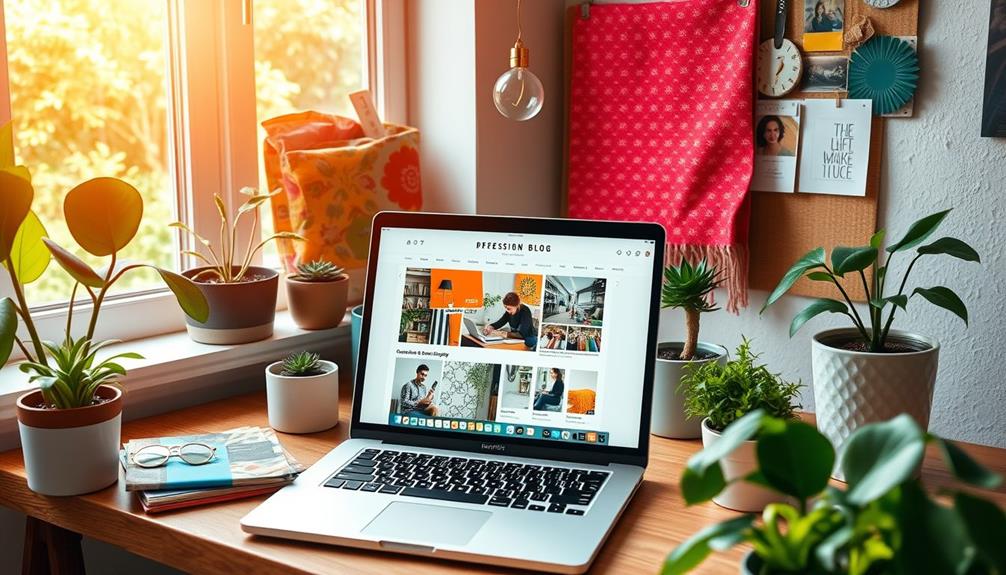
While exploring design blogs and articles, you'll find a treasure trove of expert advice that can elevate your interior design projects without costing you a dime. These resources cover everything from DIY projects to professional styling tips, making them an accessible way to gather essential design advice.
Many blogs offer free downloadable resources, checklists, and guides that can help you organize your design efforts and make informed decisions. By utilizing these tools, you can streamline your projects and stay on track.
Don't forget to check the comment sections on these blogs. They often facilitate interaction with designers and other readers, providing additional insights and feedback on your design queries. Engaging with the community can enhance your understanding and spark new ideas.
Regular updates on design blogs keep you informed about the latest trends, tips, and techniques in interior design, ensuring your knowledge remains fresh and relevant.
Plus, many blogs aggregate thousands of categorized photos for inspiration, serving as visual references for your projects. So, immerse yourself in these online resources and access valuable design advice to transform your space!
Personalized Design Assistance
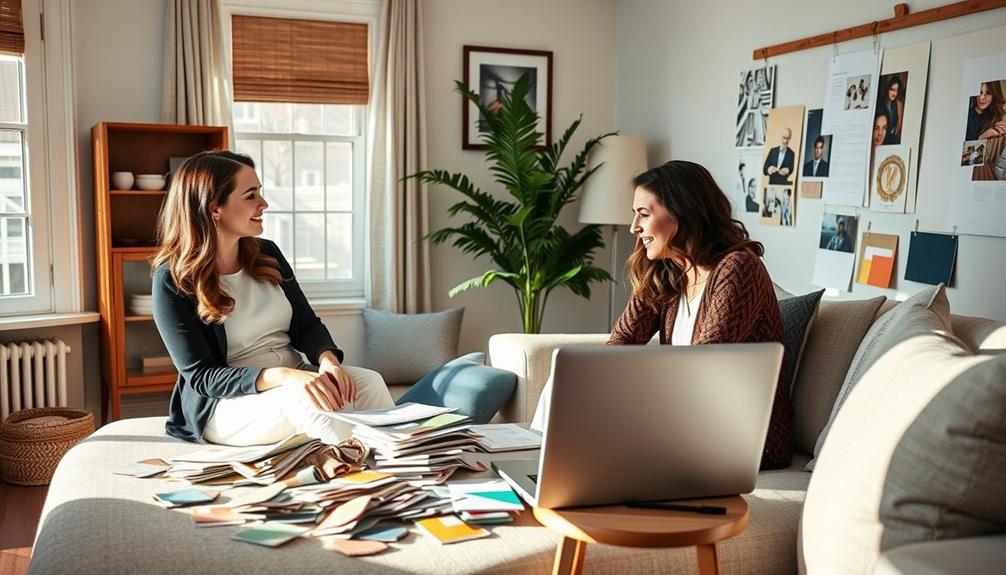
If you're looking for tailored design help, personalized consultations are just a click away.
Services like Everhem and Minted Art Styling offer virtual assistance to guide you through your projects, ensuring your space reflects your style.
Plus, you can receive custom mood boards that make the design process even easier.
Tailored Design Consultations Available
Your home's style deserves personalized attention, and tailored design consultations can provide just that. Many companies, like Everhem and Minted Art Styling, offer free virtual consultations where you can receive expert advice on window treatments and art arrangements.
These sessions typically last around 30 minutes, focusing on your specific questions about styles, measurements, and product selections to guarantee a perfect fit for your space. Additionally, exploring island getaways can inspire your design choices, allowing you to incorporate serene coastal elements into your home.
During your tailored design consultations, designers may provide layout renderings and curated shopping lists, helping you visualize proposed changes. This guidance enables you to make informed purchasing decisions that enhance your home's aesthetic without unnecessary expenses.
Additionally, some services allow unlimited communication with designers after your initial consultation. This means you can refine your ideas and address any new concerns that arise, ensuring your project evolves smoothly.
By submitting information about your preferences and existing furnishings, you'll receive tailored recommendations that resonate with your style and needs.
Take advantage of these personalized consultations to elevate your home's design, making it a reflection of your unique taste.
Virtual Assistance for Projects
Virtual design assistance is a game-changer for anyone looking to enhance their space without the stress of in-person consultations. With retailers like Everhem and Minted Art Styling offering free virtual consultations, you can get tailored advice on your design project right from home. In just a 30-minute session, a professional designer will discuss your specific needs and answer any questions you have.
During these consultations, you can expect visual aids, such as mood boards or layout renderings, to help you visualize potential design choices in your space. Plus, many services allow for unlimited communication, so you can easily adjust designs or seek clarification as needed. Best of all, these personalized design assistance options are typically free, making professional interior design advice accessible to everyone.
| Service Provider | Consultation Type | Key Benefits |
|---|---|---|
| Everhem | Window Treatments | Tailored advice |
| Minted Art Styling | Art Arrangements | Visual aids |
| Local Designers | General Design | Unlimited Q&A |
| Online Platforms | Room Layouts | Quick feedback |
| DIY Resources | Self-guided Tips | Cost-effective |
Custom Mood Boards Offered
Custom mood boards are an exciting feature of the personalized design assistance many retailers offer. Brands like West Elm and One Kings Lane provide free virtual consultations where design professionals help you create custom mood boards tailored to your specific style and space needs.
During these consultations, you'll discuss your preferences, existing furnishings, and color choices, ensuring the final mood board embodies your vision.
You can expect to receive your personalized mood boards within a week, giving you a visual representation of design ideas and curated product recommendations.
These boards can include various elements such as furniture selections, color palettes, and decorative accessories, making it easier for you to envision the overall design of your space.
Sweepstakes and Promotions

Exploring sweepstakes and promotions can be an exciting way to snag free interior design advice while also having a chance to win valuable prizes.
For instance, the Design Desk Fall Refresh Sweepstakes offers you the opportunity to win a $1,000 gift card just by securing a free appointment with a DesignDesk professional. Be sure to enter before September 4!
Many retailers run seasonal promotions that require a consultation to enter, giving you an incentive to explore free design services.
Additionally, participating in design-related events like webinars or workshops can lead to chances to win prizes or discounts on services, making the experience even more rewarding.
Don't overlook social media, either. Numerous platforms host contests where you can win free design consultations or gift cards by simply engaging with their posts or sharing your design dilemmas.
Finally, signing up for newsletters from design retailers can grant exclusive access to sweepstakes and promotions tailored to your specific needs.
Meeting Options With Design Experts

When you're ready to get design advice, you have several options to choose from.
You can schedule an in-home consultation for personalized feedback, meet in-store for immediate insights, or opt for the convenience of a virtual session.
Each choice offers unique benefits, so pick the one that suits your needs best.
In-Home Consultations Available
Many homeowners find that in-home consultations with design experts offer invaluable insights tailored to their unique spaces.
These consultations allow you to receive personalized design advice directly in your home, ensuring suggestions fit your specific layout and style. A designer can visit your space to discuss your project in detail, providing insights on color palettes, furniture placement, and decor choices that align with your lifestyle. Emphasizing the use of natural materials can help create a warm and inviting atmosphere in your home.
Many retailers, like West Elm and One Kings Lane, provide free in-home consultations, making it easier than ever to access professional guidance at no cost.
During these sessions, the designer may create a custom mood board or a shopping list based on your preferences and existing furnishings, helping you visualize your project.
Scheduling appointments for in-home consultations can typically be done online, offering flexible timing that works for both you and the designer.
This convenience allows you to explore your space's potential without the pressure of a retail environment. By taking advantage of in-home consultations, you can transform your living area with expert advice tailored just for you.
Virtual Meeting Convenience
Convenience in accessing design expertise has never been better, thanks to various meeting options with professionals. One of the most flexible choices is the online consultation via video call. This option allows you to connect with experienced designers from the comfort of your home, saving you time and travel hassle. You can easily share your space's specifics, and they can provide tailored advice right away.
During a video call, you get one-on-one time with a dedicated design professional who can assist you in creating custom mood boards, floor plans, and even 3D previews to visualize your design ideas. This personalized experience guarantees that your unique needs and preferences are taken into account.
Plus, scheduling is typically designed to accommodate different time zones and personal commitments, so you can find a time that works for you.
Whether you're looking to refresh a room or initiate a complete redesign, virtual meetings make it easier than ever to access expert guidance. Embrace the convenience of video calls, and take your interior design project to the next level without ever leaving your home.
In-Store Design Sessions
In-store design sessions offer a fantastic alternative to virtual consultations, allowing you to engage directly with design experts in a physical space. Many retailers, like West Elm, provide free in-store design sessions where you can receive personalized advice tailored to your home decor projects.
During these consultations, you'll discuss your specific design needs and preferences directly with professionals, enabling them to create custom mood boards and layout plans just for you. You might also explore options for enhancing your space with stylish wall clocks or enchanting pendant lights, ensuring a thorough approach to your interior design.
These sessions typically involve one-on-one interaction, giving you the chance to ask questions and receive tailored recommendations based on your existing space and style. You can cover a wide range of topics, from furniture selection to color palettes, ensuring you get extensive support for various home design challenges.
Scheduling an appointment is usually a breeze, providing flexibility to meet with design experts at your convenience. By taking advantage of in-store design sessions, you not only benefit from expert advice but also get to see and feel the materials and products in person, making it easier to visualize your space's potential.
Don't miss out on this valuable opportunity to enhance your home with professional insights.
Conclusion
Getting free interior design advice is easier than you think! By tapping into virtual consultations and engaging with design communities online, you can gather valuable insights without spending a dime. Don't worry if you feel overwhelmed—visual tools like mood boards or Pinterest can help you organize your ideas and see how different elements come together. So, plunge into, explore your options, and transform your space with confidence! And if you’re looking for more personalized guidance, consider reaching out to an online interior design business. Many professionals offer free initial consultations where they can assess your needs and provide recommendations for your space. With so many resources available, there’s no reason not to take advantage of the wealth of knowledge and expertise out there to help you create the perfect living environment.
